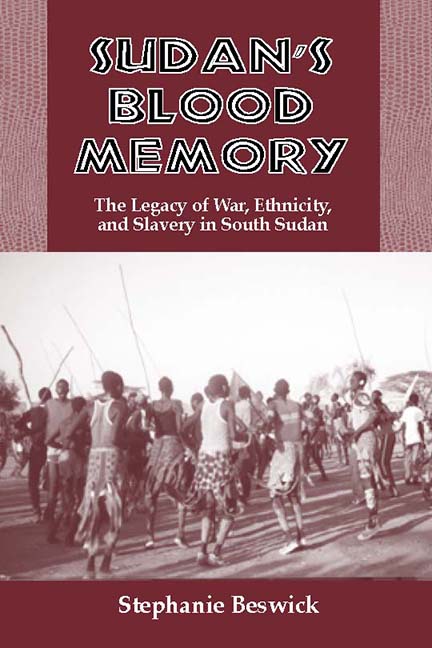Book contents
- Frontmatter
- Dedication
- Contents
- Maps
- Preface
- Acknowledgments
- A Note on Orthography and Languages
- A Note on Sources
- Map
- 1 Introduction
- 2 Geography and Brief History of Sudan
- 3 The Changing Nilotic Frontier
- The Ethno-Historical Formation of Southern Sudan
- The Ascendancy of the Dinka in Southern Sudan
- 9 Grain, Cattle, and Economic Power
- 10 Totemic Religion
- 11 Human Sacrifice, Virgins, and River Spirits
- 12 Priests, Politics, and Land
- 13 Ethnic Expansion by Marriage
- 14 Sovereign Nations within the Dinka
- Foreign Intrusion and Its Consequences
- Notes
- Glossary
- Bibliography
- Index
14 - Sovereign Nations within the Dinka
from The Ascendancy of the Dinka in Southern Sudan
Published online by Cambridge University Press: 23 July 2019
- Frontmatter
- Dedication
- Contents
- Maps
- Preface
- Acknowledgments
- A Note on Orthography and Languages
- A Note on Sources
- Map
- 1 Introduction
- 2 Geography and Brief History of Sudan
- 3 The Changing Nilotic Frontier
- The Ethno-Historical Formation of Southern Sudan
- The Ascendancy of the Dinka in Southern Sudan
- 9 Grain, Cattle, and Economic Power
- 10 Totemic Religion
- 11 Human Sacrifice, Virgins, and River Spirits
- 12 Priests, Politics, and Land
- 13 Ethnic Expansion by Marriage
- 14 Sovereign Nations within the Dinka
- Foreign Intrusion and Its Consequences
- Notes
- Glossary
- Bibliography
- Index
Summary
Today the Western Nilotic Luo form part of a great confederation of Niloticspeaking peoples spread throughout eastern Africa from the modern countries of Sudan to Uganda, Kenya, and Tanzania. The cradleland of the Luo is believed to have been the Sudan, and their closest relations are the Shilluk of the White Nile and the Anyuak, who reside southeast of the Shilluk and extend into Ethiopia. These Nilotes contribute, along with the Dinka, Nuer, and Atwot, to the larger Western Nilotic-speaking peoples in Southern Sudan.
Where Have All the Luo Gone?
Although the original homeland of the Luo is believed to be the Southern Sudan, a number of Luo oral histories, much like those of the Dinka, suggest that these Nilotes are not indigenous to this region. As mentioned in chapter 3, according to the grandparents of one Sudanese Luo, Albino Ukec Simon, all the Nilotes originated from the southern Gezira region: “We Shilluk Luo came from the far east in southern Blue Nile at a place called ‘Tindil’ close to the Ethiopian border.” A Tanzanian Maasai (linguistically classified as Eastern Nilotes) also claims that his Nilotic ancestors “originated in North Africa” and that “[M]any centuries ago we migrated and followed the Nile River upward to where we are now.”
According to historical linguistics the Southern and Western Nilotic language groups split between the years 670 and 1070. Soon thereafter, numerous Nilotic peoples began to migrate into Southern Sudan. Oral histories of the Luo suggest that at one time they came to occupy large parts of the Southern Sudan prior to the arrival of the Dinka. From here they slowly dispersed southwards, with the forefathers of the Maasai, linguistically classified as Eastern Nilotes, moving into Kenya and beyond. As mentioned in chapter 9, further waves of migrations beyond the Southern Sudan took place because of famine. The famine of 1382 to 1409 broke up the remaining Luo settlements in Southern Sudan. Other droughts followed during the years 1436–63 and 1587–1652, during which many other Luo groups migrated south into what is now Uganda. Kenyan Luo Dickson Ogolla Oroku states: “Of the Luo that moved south, the group that got to Kenya were the last to arrive after going through Uganda. We were cattle people but became fisherman and we grew millet and maize.”
- Type
- Chapter
- Information
- Sudan's Blood Memory , pp. 143 - 150Publisher: Boydell & BrewerPrint publication year: 2004



